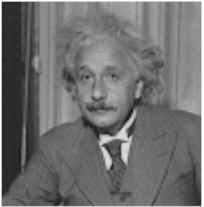

The url for these pages is: http://www.wsu.edu/~jtd/Physics206/phys206Syll.htm
Physics 206
Physics for Scientists and Engineers - Second Semester
Honors
5 Hours Credit
Webster Physical Sciences Rm B-11 MWF 11:10 am - Noon
YOU SHOULD BE ENROLLED IN A LABORATORY SECTION--there is one scheduled for 206--Gabriel is the TA
Expectations for each class:
Recitation Section: You are required to attend the weekly 2 hour Recitation Section to be held in Webster Physical Sciences Rm 11 on Thursday Evening (it is currently scheduled for 5-7 pm).
Homework: Will be assigned each week and turned in for grading on Friday ("before the doors get locked").
Quizzes: Frequent READING Quizzes will be given on line with assigned dates and times due.
Hourly Exams: Exams will be given on the following dates (approximately): Sept. 22, Oct. 20, Dec.1. Exams will be given in Recitation Section. It is assumed that you have and will bring a calculator with trig functions and logs. An equation helper will be provided for every exam--normally, you get to write it.
Grading: Grades will be determined (approximately) on the following basis:
Percent of Grade
1. Quizzes, Homework, Recitation Work 30-35%
2. Hourly exams 30-35%
3. Laboratory (Regular 201 lab will be attended) 15-20%
4. Final Exam 15-20%
GO TO: HOW TO SUCCEED IN PHYSICS 205 Concepts Still Hold for 206.
Helpful Hints on Homework Problems
In doing the homework problems you should try to organize your solutions so that they can benefit you later when studying for exams, etc.
1. Give a complete description of the problem or (easier) photocopy the problem and tape it to the page.
2. Almost every problem benefits from a diagram. Label distances, angles, vectors, coordinate axes, etc. Unit vectors are helpful in preventing mistakes and in more complex problems.
3. Try to refrain from plugging in numbers until the end. Derive equations first, then substitute in numbers. Define your variables.
4. When possible, try to interpret your results. (e.g., why two values of time?, look for limits). Sometimes this uncovers mistakes.
5. Comment on how the problem could be made more interesting (e.g., with air resistance, non-uniform acceleration, higher speeds, etc.)
Academic Integrity: Academic dishonesty, including all forms of cheating, plagiarism, and fabrication, is prohibited as stated in the WSU Student Handbook (WAC 504-25-015). The instructor reserves the right to take appropriate action.
Disabilities: Reasonable accommodations will be made for students who have a documented disability. Please notify the instructor during the first week of class of any accommodations needed for the course. Late notification my cause the requested accommodations to be unavailable. All accommodations must be approved through the Disability Resource Center (DRC) in Administration Annex 206 (335-1566).
LABORATORY MANUAL: PHYSICS 202 Laboratory Manual,
LABORATORY: Please report to your assigned lab.
WHEN DOES LAB START? -- normally, the second week of classes--jtd will check.
Welcome to Phy206!
This course is primarily about electricity, magnetism, and light.
Chapters Covered in Serway Chap. 23-38
Approximate Schedule
Problems are Due on Friday Night
DATE
TOPIC
CHAPTER
Aug
22
Discrete Charge & Coulomb’s Law
23
24
Electric Field
23
26
Continuous Charges
23
29 Gauss’s Law 24 31 Discontinuity of En 24 Sep. 2 Conductors in Electrostatic Equilibrium 24 Sep. 5 Labor Day 7
Electric Potential
25
9
Equipotential surfaces; various charge distributions
25
12
Capacitor combinations
26
14 Capacitors & Dielectrics 26 16
Current & resistivity
27
19 Superconductors, Direct Current Circuits 27, 28 21
Kirchhoff's Laws, RC Circuits
28
Sep. 22 FIRST EXAM (during recitation section) 23
Finish up DC Circuits
28
26
Magnetic fields
29
28
Torques, applications
29
30
Hall Effect
29
Oct.
3
Sources of Magnetic Fields
30
5
Biot & Savart’s Law
30
7
Ampere’s Law
30
10
Magnetization
30,31
12
Paramagnetism/Ferromagnetism
30,31
14
Faraday’s Law
31
DATE
TOPIC
CHAPTER
Oct.
17
Motional emf
31,32
19
Inductance
32
OCT 20 EXAM 2 (During Recitation) 21
ac Generators
33
24
L, and C in ac circuits
33
26
R, L, C; Transformers
33
28 Maxwell's Equations 34 31
Maxwell’s Equations
34
Nov. 2
Electromagnetic Waves
34
4 Properties of Light 35
7
Properties of Light
35
9
Reflection/Refraction
35
11
Polarization
35
14 The Laws of reflection/ refraction
36
16 Images with mirrors
36
18 Images with lenses
36
Nov. 21-25
THANKSGIVING BREAK
28
Optical instruments
36,37
30
Multiple lens systems
36,37
Dec.
1
EXAM 3 (during recitation)
2
Interference in films
37
5
2 slit interference patterns
38
7
Single slit diffraction
38
9
Gratings
38
Dec
12-16
FINAL EXAM
to be announced
Additional Resources:
- Physics Web - A good jumping off point for learning physics on the web.
- Textbook Publisher Help - A tool associated with the textbook "Physics for Scientists and Engineers 6th ed.", by Serway and Jewett.
- Interactive Textbook - An online "book" that includes extensive text to accompany the Java applets used to illustrate concepts.
- The Virtual Physics Laboratory of NTNU (The National Taiwan Normal University) - 13 interactive mechanics demos along with 47 demos from other physics disciplines.
- Vector Addition Demo - one of the better vector addition demos available on the net.
- Online undergraduate physics Laboratories (including demos) from the University of Kentucky.
- Fizzics Fizzle - Another thorough set of demos ranging in difficulty level from high school up through freshman physics.
- Brooks/Cole Publishers - a number of computer demos that accent their textbooks. This link is to their mechanics page but they author other topics as well.
- Think Quest - sort of "live" textbook with interactive demonstrations of important concepts
If you have questions, email jtd@wsu.edu